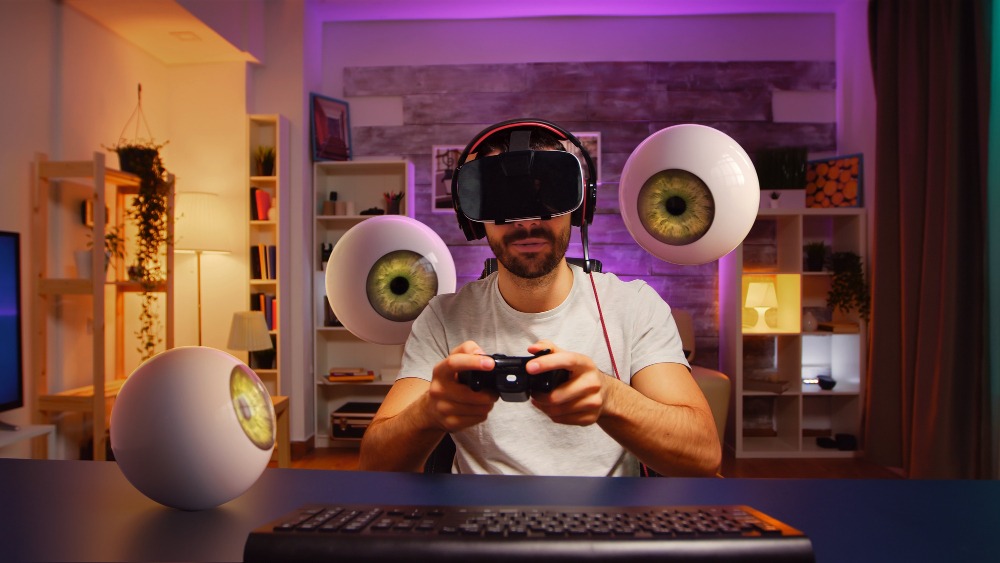Introduction
Welcome to a world where the boundaries of medical diagnosis and treatment are expanding faster than ever before! As we step into 2024, it’s clear that breakthrough technologies are not just knocking on the door of healthcare; they’ve already entered the room, ready to redefine what’s possible. From AI-driven diagnostics to revolutionary treatment methods, these innovations promise not just to change the way we approach healthcare, but to transform patient outcomes for the better. Whether you’re a healthcare professional, a tech enthusiast, or someone curious about the future of medicine, join us as we explore how these cutting-edge technologies are shaping a new era in medical care. With each advancement, we’re moving closer to a world where diagnoses are more accurate, treatments more effective, and the hope for a healthier tomorrow is brighter than ever.
Breakthrough Technologies in Medical Diagnosis
The medical field is standing on the brink of a technological revolution that promises to transform the way we diagnose diseases. Two of the most groundbreaking advancements are the use of artificial intelligence (AI) and nanotechnology. These innovations are not just redefining possibilities but also setting new standards for accuracy and efficiency in diagnostics.
Artificial Intelligence in Diagnosing Diseases
Artificial Intelligence (AI) in medical diagnosis is a game-changer. Its ability to process and analyze vast amounts of data far exceeds human capacity, making it a vital tool in identifying diseases early and accurately. AI algorithms, trained on thousands of medical records, can detect patterns and anomalies that may elude even the most experienced doctors. For instance, AI-powered systems are becoming increasingly adept at diagnosing cancers from imaging scans by identifying subtle changes that signal the presence of a tumor. This technology is not only improving the accuracy of diagnoses but also significantly reducing the time it takes to arrive at them, ensuring that patients receive timely and appropriate care.
Nanotechnology Enhancing Precision Diagnostics
On the microscopic front, nanotechnology is another stellar advancement taking the stage. By manipulating matter at an atomic or molecular level, scientists can create tools and devices that improve the precision of diagnostic tests. For example, nanoparticle-based contrast agents can be used in imaging to highlight tumors more clearly than traditional methods. Moreover, lab-on-a-chip devices utilizing nanotechnology can detect diseases from just a tiny sample of blood or saliva, offering a less invasive and more comfortable patient experience. These nanodevices are particularly promising for early detection of diseases, potentially even before symptoms appear, paving the way for preemptive treatment strategies.
Breakthrough Technologies in Medical Treatment
The treatment side of medicine is witnessing equally impressive technological strides. Robotic surgery, gene editing, and immunotherapy are at the forefront, each introducing new realms of possibilities for treating diseases.
Robotic Surgery: Advancements and Benefits
Robotic surgery is perhaps one of the most visually striking technological advances in medicine. Through this technology, surgeons can perform complex procedures with higher precision, flexibility, and control than is possible with traditional techniques. Equipped with miniaturized surgical instruments and a high-definition camera, robotic systems allow surgeons to see the surgical site more clearly and operate in tight spaces within the body with more accuracy and less invasiveness. This means patients often experience reduced pain, minimal scarring, quicker recovery times, and lower risks of infection. Robotic surgery is proving particularly beneficial in fields like urology, gynecology, and cardiothoracic surgery, among others.
Gene Editing for Personalized Therapies
Gene editing, especially CRISPR-Cas9 technology, is making personalized medicine more of a reality than a promise. This technology allows scientists to precisely edit the DNA of cells, potentially correcting genetic defects that cause diseases. The implications are vast, from treating inherited disorders like sickle cell anemia to developing customized therapies that target specific aspects of an individual’s genetic makeup. This tailoring of treatments not only enhances their efficacy but also minimizes side effects, representing a significant leap forward in how we approach disease management and patient care.
Immunotherapy: Revolutionizing Cancer Treatment
Immunotherapy is another exciting arena where we see significant advancements. It represents a new pillar in cancer treatment, alongside surgery, radiation, and chemotherapy. Unlike traditional treatments that directly target the cancer cells, immunotherapy works by empowering the patient’s own immune system to fight the tumor. New drugs and therapies are being developed to help the immune system recognize and attack cancer cells more effectively. For many patients, immunotherapy offers hope where other treatments have failed, especially in cases of advanced or hard-to-treat cancers. What makes immunotherapy even more promising is its potential to provide long-lasting protection against cancer recurrence, making it a cornerstone of future cancer care strategies.
The transformations occurring in the medical field are profound. These breakthrough technologies in diagnosis and treatment are not just enhancing the quality of healthcare; they are revolutionizing patient outcomes. From the microscopic precision of nanotechnology to the personalized touch of gene editing, the integration of these innovations into everyday medical practice is setting a new benchmark for what is possible in healthcare. As we move further into 2024 and beyond, the future of medicine looks brighter and more promising than ever, thanks to these technological marvels.
Integration of Technologies for Comprehensive Patient Care
The landscape of healthcare and medicine is evolving at an unprecedented rate, thanks in large part to the integration of multiple technologies that aim to offer more comprehensive and personalized patient care. Two of the most exciting advancements in this domain include the Internet of Things (IoT) for remote patient monitoring and Blockchain technology for secure health data management. These technologies are not just redefining the possibilities within healthcare; they are setting new standards for how patient care is approached, managed, and delivered across the globe in 2024.
# Internet of Things (IoT) in Remote Patient Monitoring
Imagine a world where your doctor knows you’re getting sick before you do. Sounds like something out of a science fiction novel, right? Well, with the Internet of Things (IoT) in remote patient monitoring, this concept is becoming a reality. IoT refers to the interconnection via the internet of computing devices embedded in everyday objects, enabling them to send and receive data. In healthcare, this technology involves the use of wearable devices such as heart rate sensors, fitness bands, glucose monitors, and more, which collect health data from patients in real-time.
This real-time data provides a steady stream of health information, offering a more comprehensive view of a patient’s health status without the need for constant physical doctor visits. For instance, wearable devices can monitor a patient’s heart rate, blood sugar levels, and even sleep patterns, sending this information directly to healthcare providers. This allows for immediate interventions if the data indicate a potential health issue, making remote patient monitoring a cornerstone for preventive medicine and chronic disease management in 2024.
# Blockchain Technology for Secure Health Data Management
As we lean more towards digital health services, the importance of secure health data management skyrockets. Enter Blockchain technology, a system that allows for the secure, transparent, and tamper-proof management of digital information. In the context of healthcare, Blockchain provides a revolutionary way to store and share patient data among various stakeholders, including doctors, hospitals, and insurance companies, while ensuring the highest level of security and privacy.
Blockchain technology works by creating a decentralized record of transactions which can be simultaneously used and accessed by multiple authorized parties. This is particularly beneficial in healthcare for several reasons. First, it reduces the risk of data breaches and fraud, since altering any information within the blockchain would require the consensus of all participants in the network. Secondly, it allows for a more seamless exchange of medical records, ensuring that patients receive timely and coordinated care. Finally, it empowers patients by giving them control over who can access their medical information, fostering a transparent and patient-centered healthcare environment.
By harnessing the power of IoT for remote monitoring and blockchain for secure data management, the healthcare industry in 2024 is pushing the boundaries of what’s possible in medical diagnosis and treatment. These technologies are not just improving the ways we manage health and diseases but are also paving the path toward a future where healthcare is more accessible, efficient, and personalized for everyone.
Conclusion: The Future of Healthcare Technology
The realm of healthcare technology is experiencing an enthralling evolution. As we glance into the future, it’s crystal clear that these advancements are not merely stepping stones but giant leaps towards transforming how we diagnose, treat, and ultimately understand human health. The breakthrough technologies of 2024 – ranging from AI-driven diagnostics to revolutionary gene-editing tools – are paving the way for a new era. Here’s what stands out about the future of healthcare technology:
– Personalized Medicine: Tailor-made treatments are becoming a reality, ensuring that healthcare is as unique as the individual receiving it.
– Accessibility: Cutting-edge solutions are making healthcare more accessible, breaking down barriers that once limited patient care.
– Precision: With technologies like CRISPR and AI, the precision of medical diagnosis and treatment has reached unprecedented levels, minimizing errors and maximizing outcomes.
In summary, the future looks promising. Technologies are not only redefining our approach to medical diagnosis and treatment but are also enhancing the patient experience, making health care more efficient, accurate, and personalized. As we continue to embrace these innovations, the horizon of what’s possible in healthcare continues to expand, ensuring a healthier tomorrow for everyone.





















